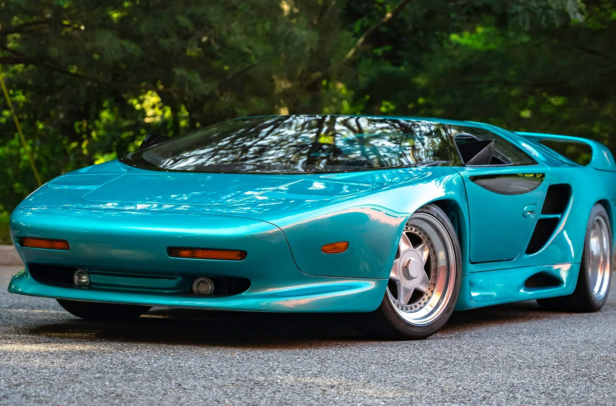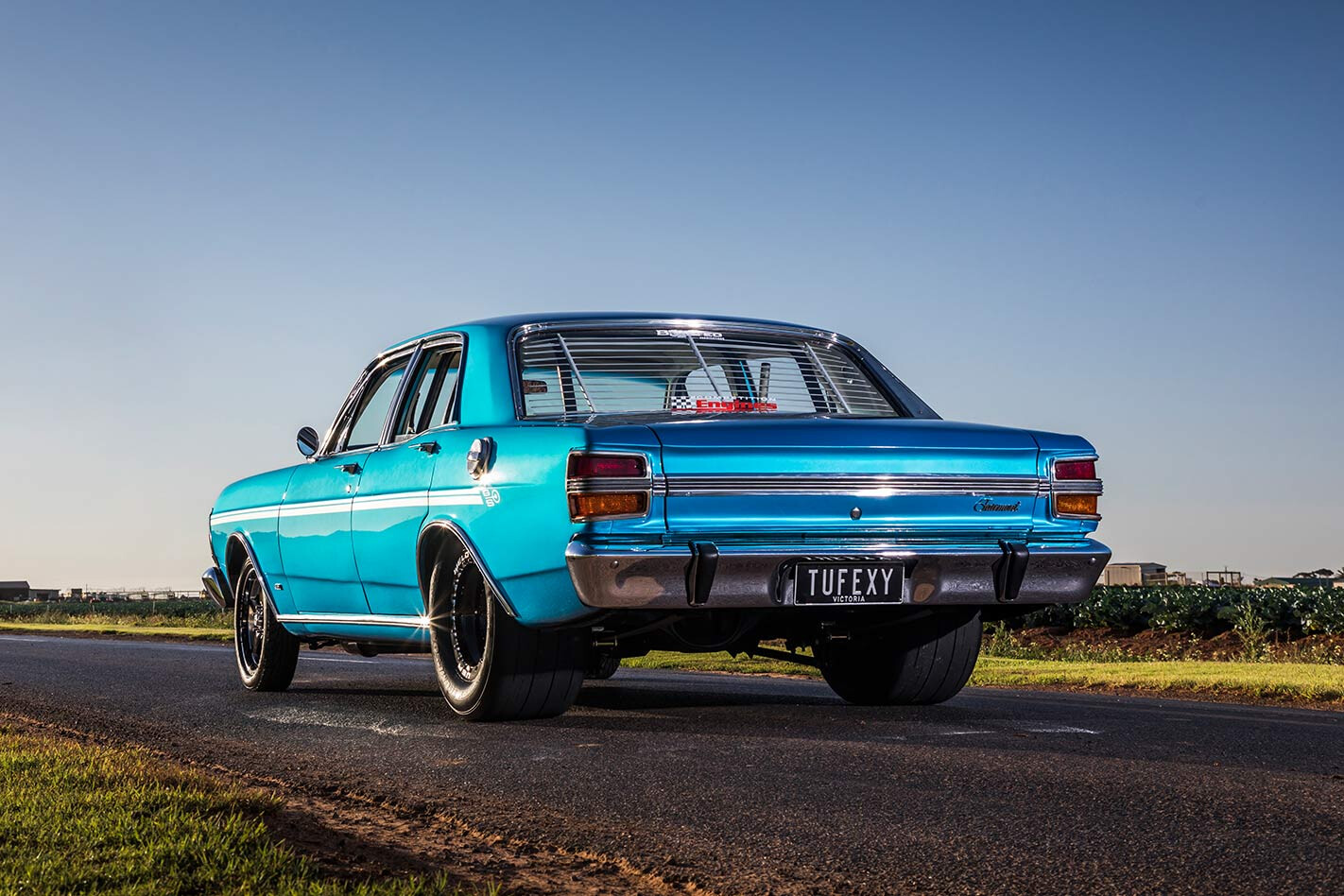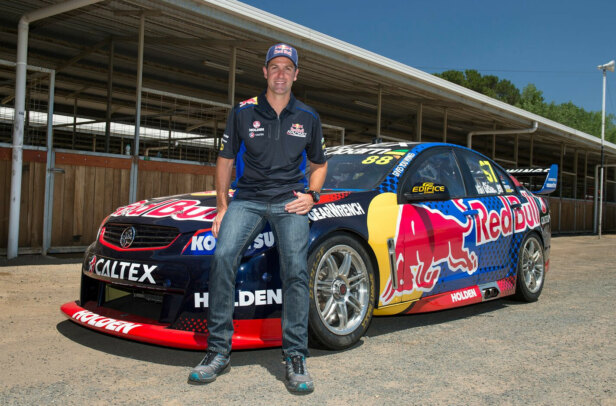BACK in the 1970s, the Italians – primarily Ferrari and Lamborghini – had the supercar game sewn up. The USA didn’t even have a contender, and there were no signs that the Big Three had any interest in joining the fray.
First published in the April 2021 issue of Street Machine
That left a young Gerald ‘Jerry’ Wiegert to spurn a promising career as a design consultant for the Detroit car companies to chase his dream of creating his own all-American supercar: the Vector. With its scissor doors and twin-turbo V8 power, the Vector’s stealth-fighter looks saw posters of the car adorn countless bedroom walls the world over. Precious few Vectors were actually produced, but that hasn’t prevented them remaining an object of fascination.
Wiegert passed away on 15 January, closing the door on one of the craziest chapters in American automotive history.
Pinning anything down about Wiegert’s biography is a tricky business, but we know he was born in Dearborn, Michigan in 1944. His dad was a machinist by trade, and by the time Wiegert was in grade 10, he and some mates had repowered a ’54 Chevy with Oldsmobile J2 tri-power, creating a fearsome B/GAS destroyer.
Wiegert studied design, interned for GM and later worked as a consultant for each of the Big Three. He eventually turned down a full-time gig at GM, because – as he told Hagerty magazine years later – “frankly, I didn’t want to be a yes man.” Instead, Wiegert went his own way in 1971 and founded his own design house, the outrageously named Vehicle Design Force.
He knocked up a one-fifth scale model of what would become the Vector and then teamed up with Lee Brown of Precision Auto Body to build a full-size prototype. The car had no engine, but the prospective candidates at the time were either a Porsche flat-six or a Wankel rotary.
Despite being little more than a fibreglass shell, the audacity of the design saw the Vector hit the cover of Motor Trend in April 1972, giving the project almost instant international recognition.
Despite this, Wiegert fell out with Lee Brown and by 1977 was forced to give up ownership of the original concept vehicle. Vowing to remain independent from that point on, Wiegert started again and began work on the Vector W2.
A pre-production W2 appeared on the cover of Car & Driver, December 1980. The story inside waxed lyrical about the W2’s race-bred engineering, 650hp twin-turbo V8 and mind-boggling looks, but contained no road test.
Wiegert supposedly clocked massive miles behind the wheel of the W2 – apparently because he couldn’t afford a tow car and trailer to take it to shows and exhibitions as he hustled for financial backing.
Top speed claims far in excess of 200mph were never verified, but were an essential part of the Vector hype and mythology. However, the W2 never entered production, and Wiegert began work on the even more-ambitious W8. In order to fund it, Wiegert renounced his vow of independence and started a new, publicly listed company. This meant he’d have to answer to both a board and shareholders, but it also allowed Wiegert to raise the funds to finally unveil an updated, production-ready version of the W8 in 1989.
The first two buyers were a pair of Saudi princes. The rich and famous – including tennis star Andre Agassi – lined up to buy a Vector for $400,000. The hand-built production line was slow and couldn’t keep up with the demand.
What buyers got for their money was surely the most advanced supercar of the day. At a time when the old guard relied on traditional steel construction, no electronic assistance and cantankerous, 400hp engines, the W8 featured insane tech like a Kevlar and carbonfibre body with a honeycomb aluminium floorpan and semi-monocoque chassis.
The W8 packed a six-litre aluminium Rodeck block, filled with good gear like TRW pistons, Carrillo forged steel rods and a forged crank. Bolt-ons included dry sump oiling, AFR cylinder heads and intercooled Garrett turbos running 8psi, for a dyno-proven 625hp on tap. However, if you came up against something spicy, you could turn a boost knob up to 14psi and get 730hp at your disposal!
Wiegert wanted the Vector to be the most advanced and well-appointed supercar on the market, packing the best technology. W8s had features like electric Recaro seats with pneumatic lumbar support, surround-sound audio, switchgear from F/A-18 fighter planes, electroluminescent gauges, military-spec wiring, aviation circuit breakers, Alcon four-piston brakes, NASCAR hub carriers and aircraft-quality fittings.
The W8 also grabbed a stack of attention for its claimed top speed of 242mph. While the car couldn’t live up to that bold marketing, one tester saw 193mph. Other performance measures were phenomenal, as Road & Track reported in its April 1991 issue. At Pomona Dragway, the 0-100km/h sprint was dispatched in a crazy-fast 3.8 seconds and the quarter-mile destroyed with a 12.0@118mph. Road & Track also recorded 0.97g in its skidpan test, the highest figure the magazine has ever recorded for a street car. Out on the road, the Vector had the usual supercar issues around driver vision, but was otherwise apparently unfussed and tractable in LA traffic. Car & Driver tested a pair of W8s the same year and achieved similar performance figures, despite one car overheating and the other suffering gearbox woes.
In all, 21 W8s were built – at least a partial redemption of Wiegert’s vision.
The W8’s successor was to be even wilder – the Avtech WX-3 coupe and WX-3R roadster. One prototype of each was built in 1992, with the coupe powered by a 1200hp mill. The price? An eye-watering $765,000.
Wiegert needed more investment, and in 1993 he allowed an Indonesian company named MegaTech to buy a controlling stake in Vector Automotive. After initially dropping some much-needed cash into Vector, MegaTech pulled their funding, while also snaking Wiegert on a deal he’d organised to buy the troubled Lamborghini company from Chrysler.
Without money for wages and bills, the company was in dire straits and the board voted to sack its founder. Wiegert refused to relinquish control and locked down the Vector HQ in LA (which he owned outright, along with the patents to the Vector cars) with armed guards.
MegaTech moved production to Florida and released the Vector M12, which used many Lamborghini Diablo parts – a slap in the face of Wiegert’s made-in-America ethos. Production began in 1995 and just 14 cars were completed.
In 1999, a court ruling handed the Vector name back to Wiegert, along with 15 semi-trailer loads of cars and equipment. While he never released another production car after the W8, Jerry Wiegert kept hustling and releasing Vector concepts. At the 2007 LA Auto Show, he debuted the prototype WX-8, said to be powered by a blown 7.0-litre V8. Wiegert again promised stunning performance figures, including low 11s over the quarter and 270mph when geared for top speed.
As late as 2018, Wiegert was still actively promoting the WX-8, promising the choice between a 10-litre, twin-turbo donk and a hybrid electric/V8 mash-up. It was not to be, but you have to admire the man’s vision and his relentless, grinding desire to bring his dreams to reality, no matter what the obstacles.





Comments